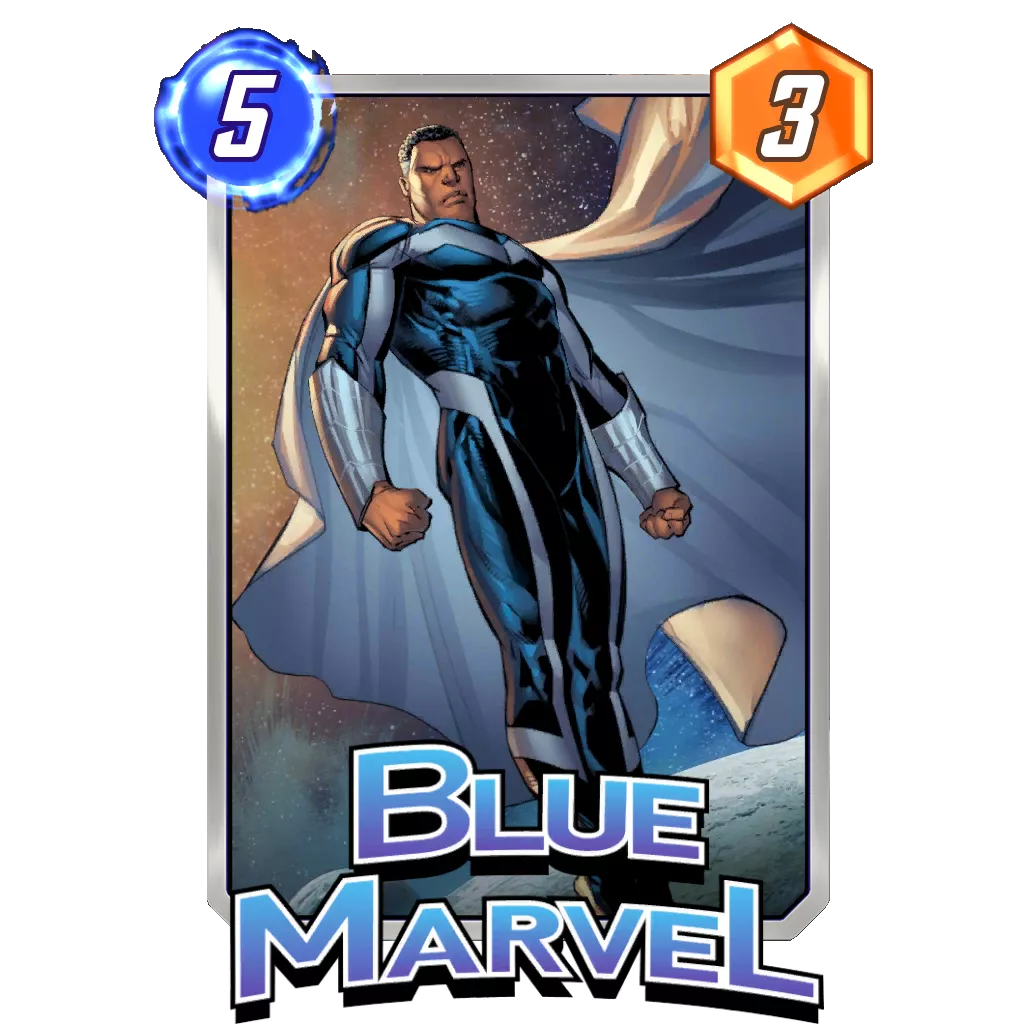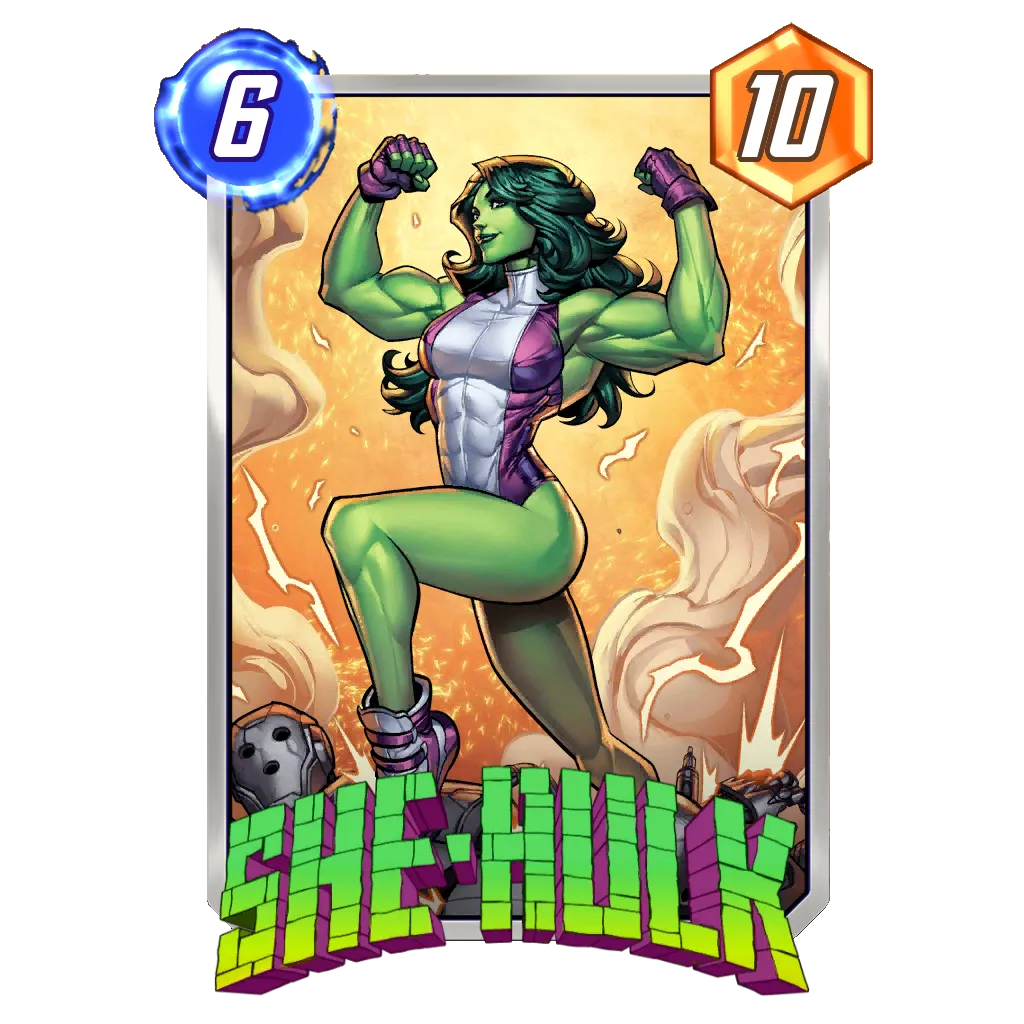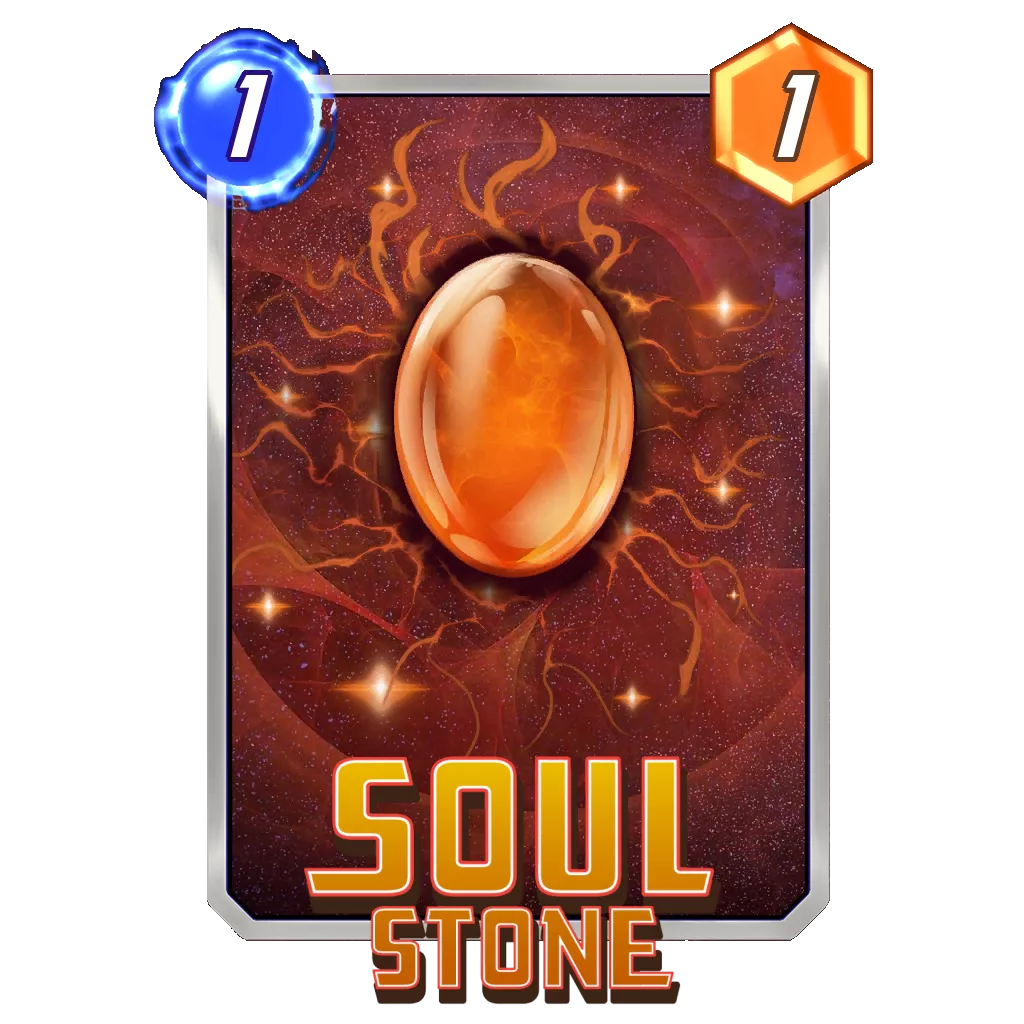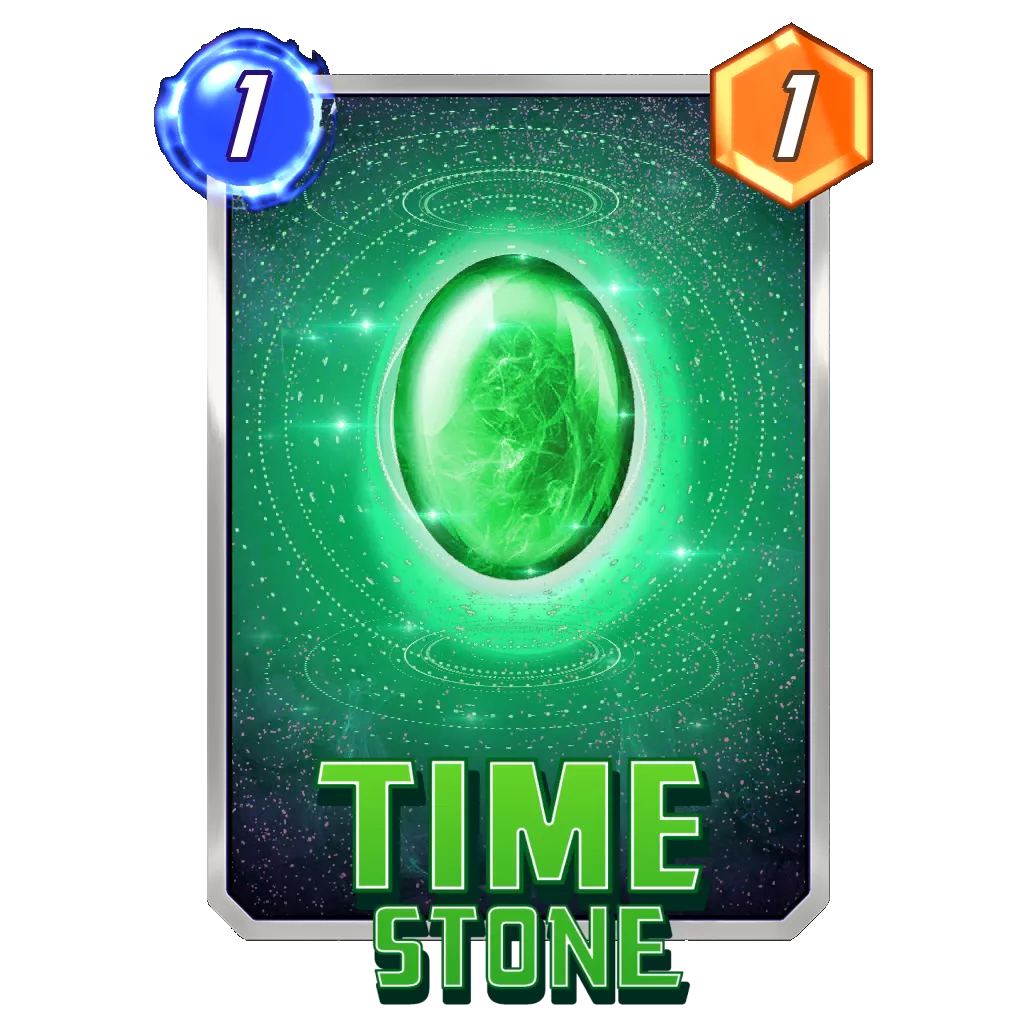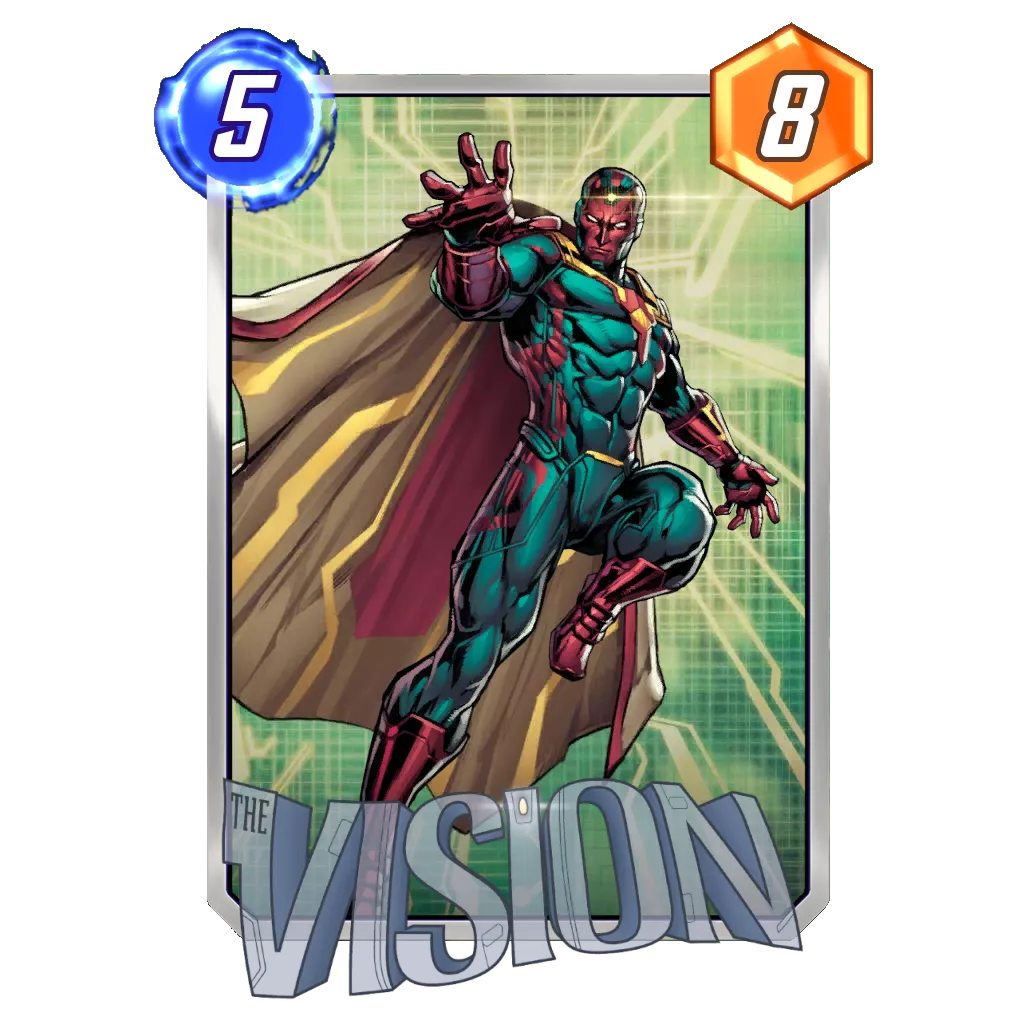Table of Contents
What’s good everyone, I’m lambyseries, current Marvel Snap streamer and try-hard rank grinder. Some of you might know me from my previous exploits as a professional gamer in other card games; do check me out on my socials at Twitch and Twitter.
Today I bring you an informative guide on how to pilot the best deck in the current metagame of Marvel Snap: the inevitable Thanos Lockjaw. Packed in my brain are thousands of games with this deck, along with feedback from a very try-hard practice group (including individuals such as KMBest, you may have heard of him) that aim to optimize this deck to perfection.
Before we get into the juice of the guide, there are some things to note. This guide aims to help you understand card choices, play patterns, and possible scenarios with the deck. It will not turn you into the best Thanos Lockjaw player overnight; the deck has a multiverse of decisions and flexibilities that are unique to each individual situation you end up in. What I hope to achieve with this guide is helping you identify these scenarios for yourself in order to make the most informed decisions each time so you can improve your own win rate.
Here we have a standard Thanos Lockjaw list as a reference. We will go over the main use cases of each card in the list and also highlight common scenarios you may encounter with each individual card. If you are decently versed with the general use cases of the cards and want to jump straight to the game play strategy, head over to the Gameplay Guide and General Strategies section below.
Card Breakdowns
Thanos
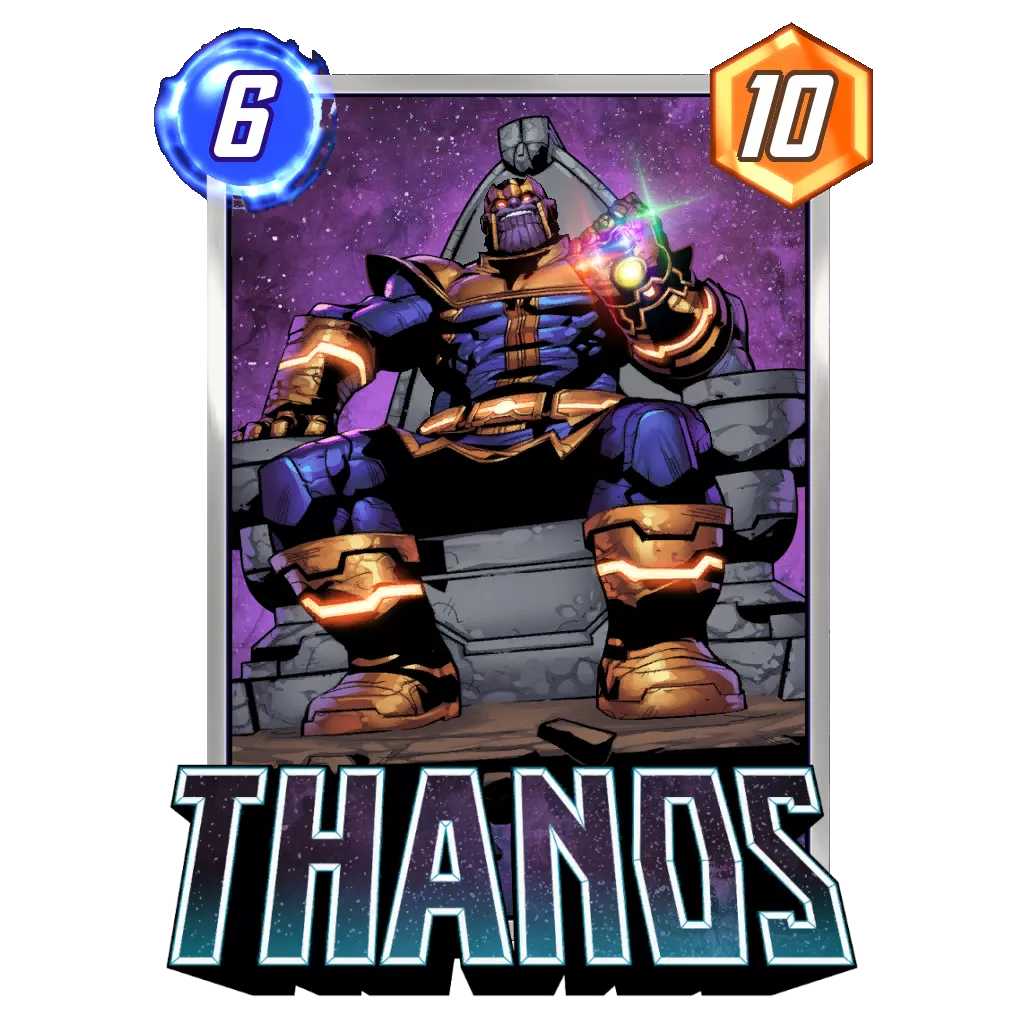










The mad titan himself comes off a recent patch with a buff to 11 power. With a potential 21 power if you’ve played all the Infinity Stones, he is able to contest locations on his own with ease.
I believe this to be the most important Stone to have in your opening hand. The Mind Stone has a simple deck thinning effect that allows you to spend all your energy efficiently in the early turns by drawing more Stones. Which Stones you draw off of the Mind Stone help you dictate how you may want to deal with locations or your opponent’s plays.
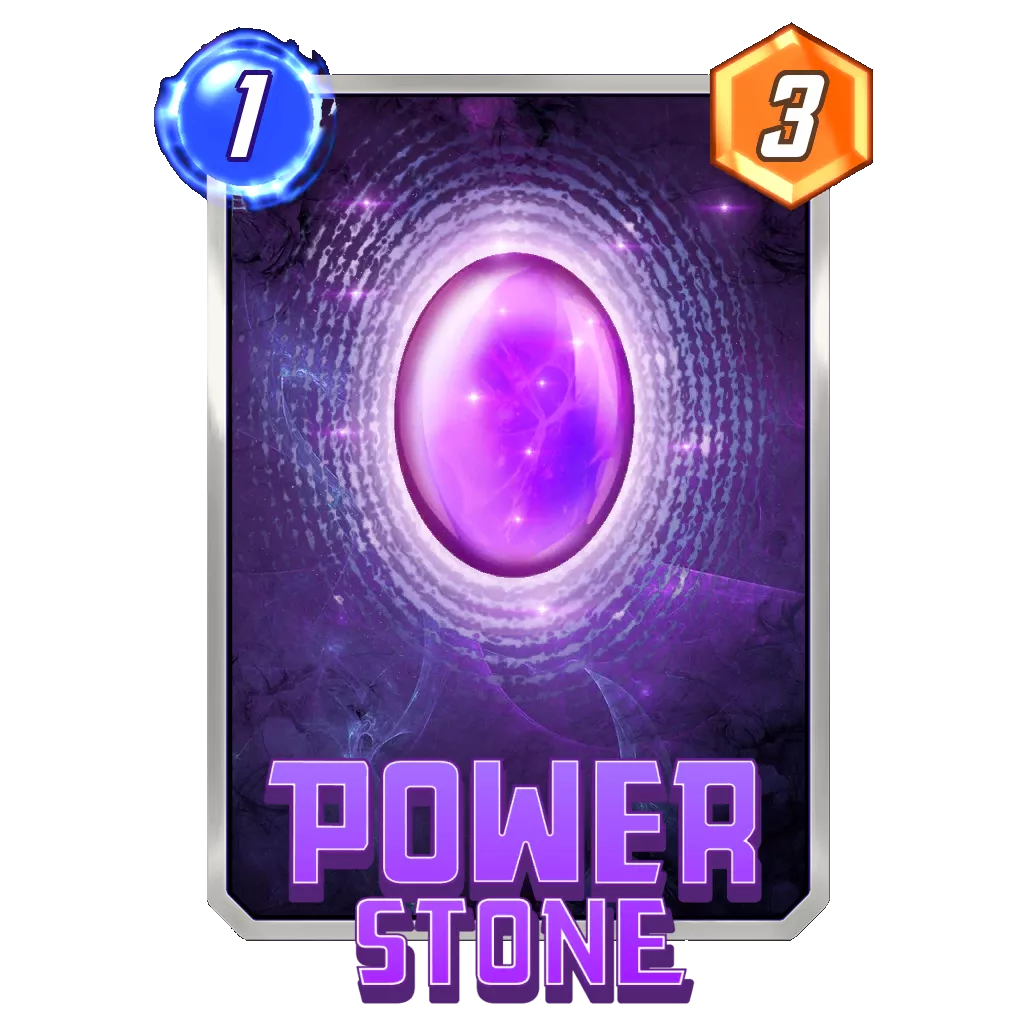
This Stone gives Thanos a huge bump in power after playing all six Stones. Do note that the Power Stone has to stay on board for the buff to occur, while the other Stones can be removed after they have been played at least once. As a 1-cost card with three power, it’s also just a very cheap option to add points to the board.
If played on a full location on the opponent’s side, it is one energy for -4 power on your opponent’s side. This is a very efficient debuff that could mean the difference between winning or losing a location.

Reality can often be disappointing, but this Stone is extremely clutch in getting rid of adverse locations that plague your game plan. The timing of playing the Reality Stone is also crucial; for example, playing it turn six on Bar with No Name could steal the location as your opponent may not be expecting you to be able to play points there.
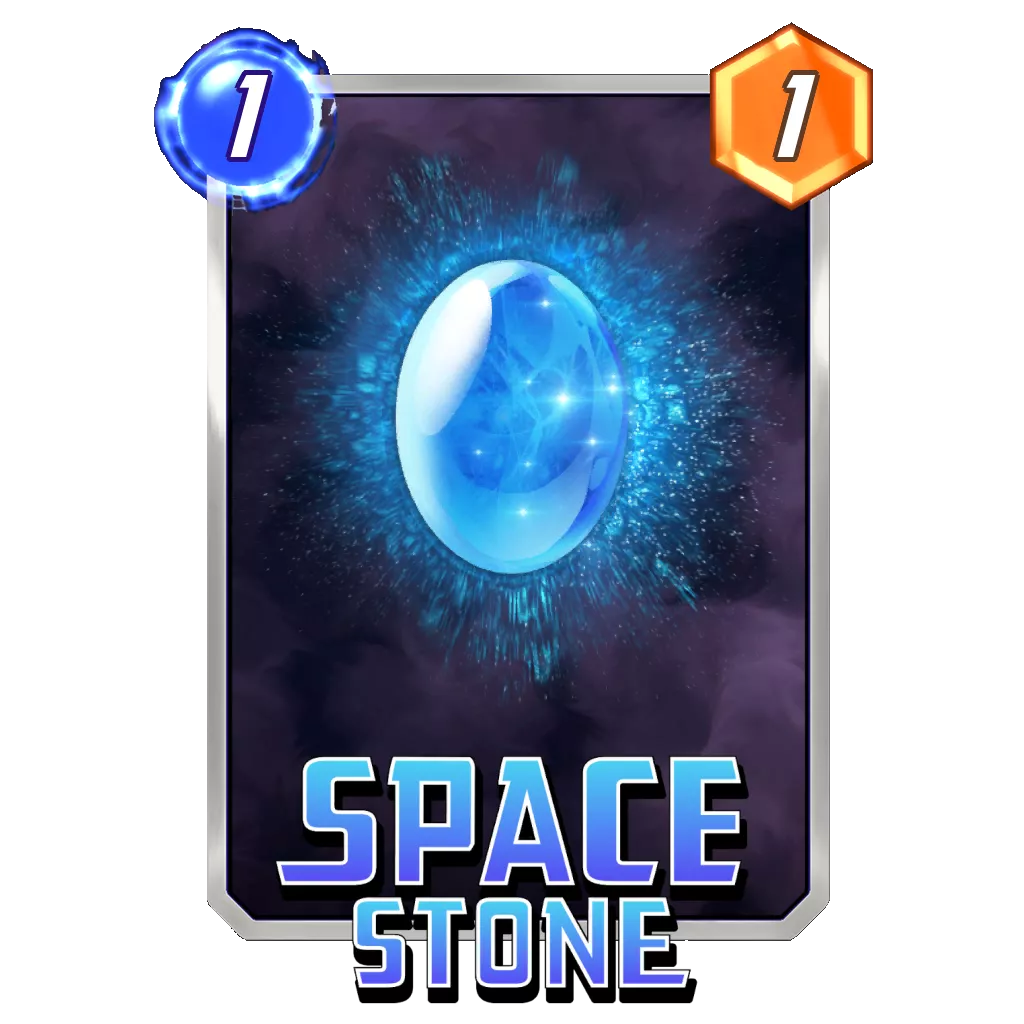
Provides very efficient mobility. The ability to move cards around the board could mean many things and opens up a world of possibilities in terms of outsmarting your opponent. A few examples include shifting a high power card out of a location if you expect an opposing Shang-Chi, shifting a Lockjaw into a new lane to continue to cycle cards, and shifting anything into adverse locations like Death's Domain to win a lane that your opponent cannot play cards in themselves. Regarding game winning plays, this Stone rivals the Reality Stone in importance by allowing you to be as unpredictable and flexible as possible.
The deck has a number of powerful 5-cost cards, and playing the Time Stone on Turn 3 into two 5-drops on Turns 4 and 5 is a very common way of snowballing a huge amount of points on the board for the win. A strategy not to be overlooked is playing the Time Stone on Turn 1 to play a Lockjaw on Turn 2, allowing for early access to high rolling good outcomes off of your cycles. I would say learning the timing of playing this Stone puts in the most work when initially learning the deck as the above mentioned examples are generally very game winning.
Quinjet
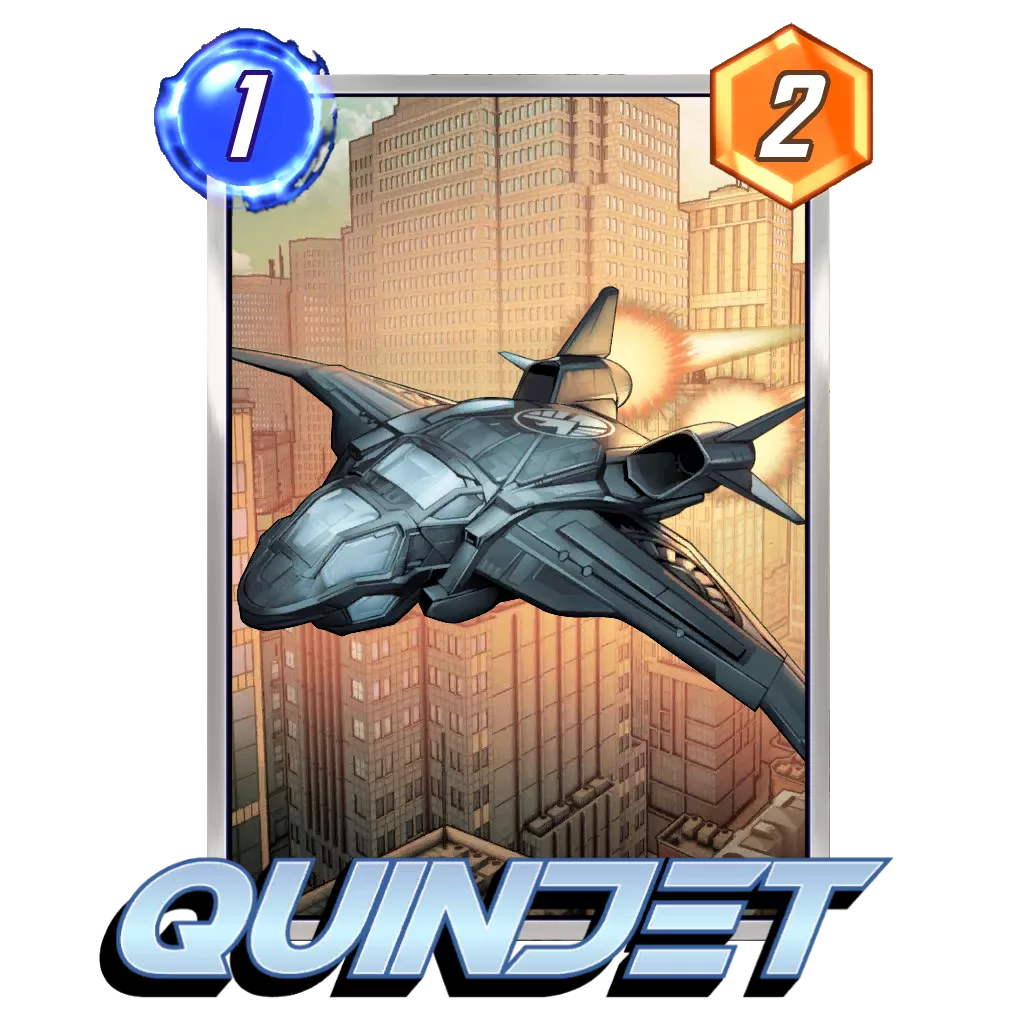





Quinjet might be the most powerful card in this deck (Calm down Lockjaw, be a good boy. We’re getting to your part soon!). Quinjet allows this deck to do what pre-nerf Zabu did: cheat a lot of energy. In a game that is constrained by six turns and six energy, Quinjet gives you the ability to play your Infinity Stones at no cost at all.
With how game winning the Stones effects can already be, pairing them alongside any of your other power plays allows you to be doing more things than your opponent for most of the game and directly translates into putting more points on the board and disrupting your opponent’s strategies.
Sunspot
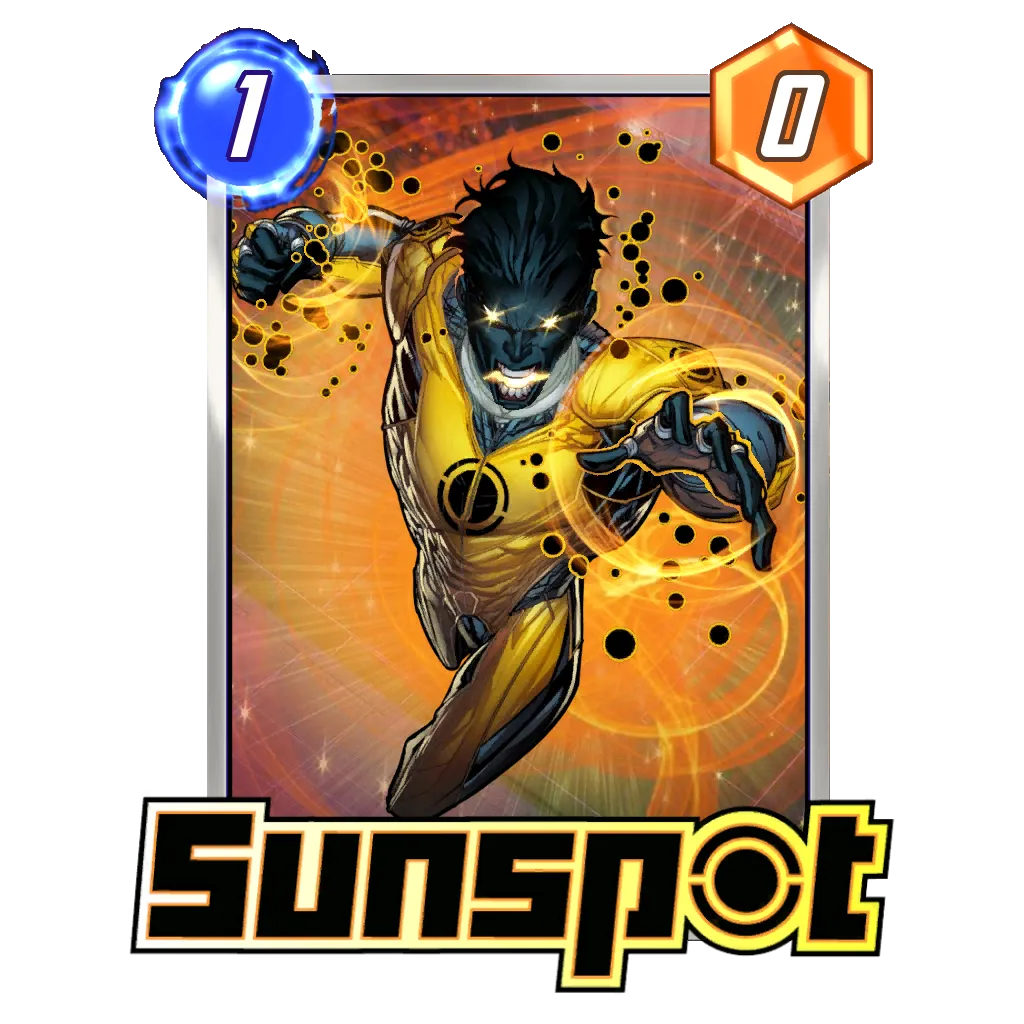









This deck has the tendency to float a lot of energy in the early game, either by missing on drawing your Stones or Quinjet reducing their cost to nothing. Sunspot shores up the “wasted energy” by turning it into power. Sunspot also lets you contest filled locations by floating the required amount of energy to get it to a size that’s able to contest your opponent’s power. There are also niche cases where you can do tricks like manipulating Sunspot’s power to stay below nine so it remains immune to Shang-Chi.
She-Hulk
In a similar vein to Sunspot, this card carries clunky early hands by allowing you to play a big threat early (like on Turn 4 if you spent fewer than two energy on the previous turn).
Lockjaw
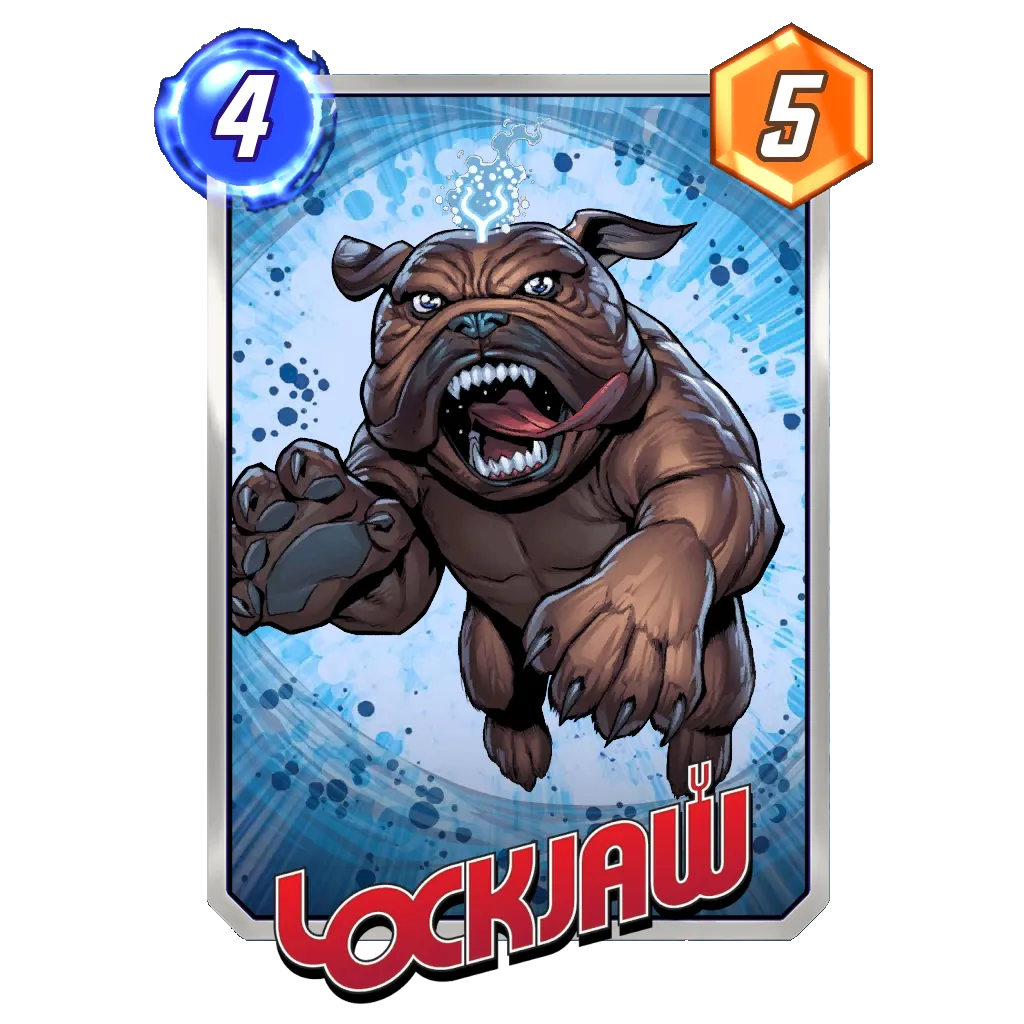






The other half of the Thanos Lockjaw deck, this card paired with the low-cost, high-efficiency Stones allows you to cheat out absurd amounts of points very early. With Quinjet on the board, you can do this at any point in the game since your Stones cost nothing.
very common play line is playing the Space Stone into Lockjaw on Turn 3, allowing you to potentially summon a big threat from your deck and then shifting either the Lockjaw or the threat to another location. I rate this the second most powerful card behind Quinjet, but it is very, very close because both cards are a match made in heaven in this deck.
Blue Marvel
A natural fit in a deck filled with 1-cost cards. Blue Marvel, like Sunspot, also allows you to contest filled locations by adding an extra four power, which could become a surprise win against an unsuspecting opponent.
Devil Dinosaur
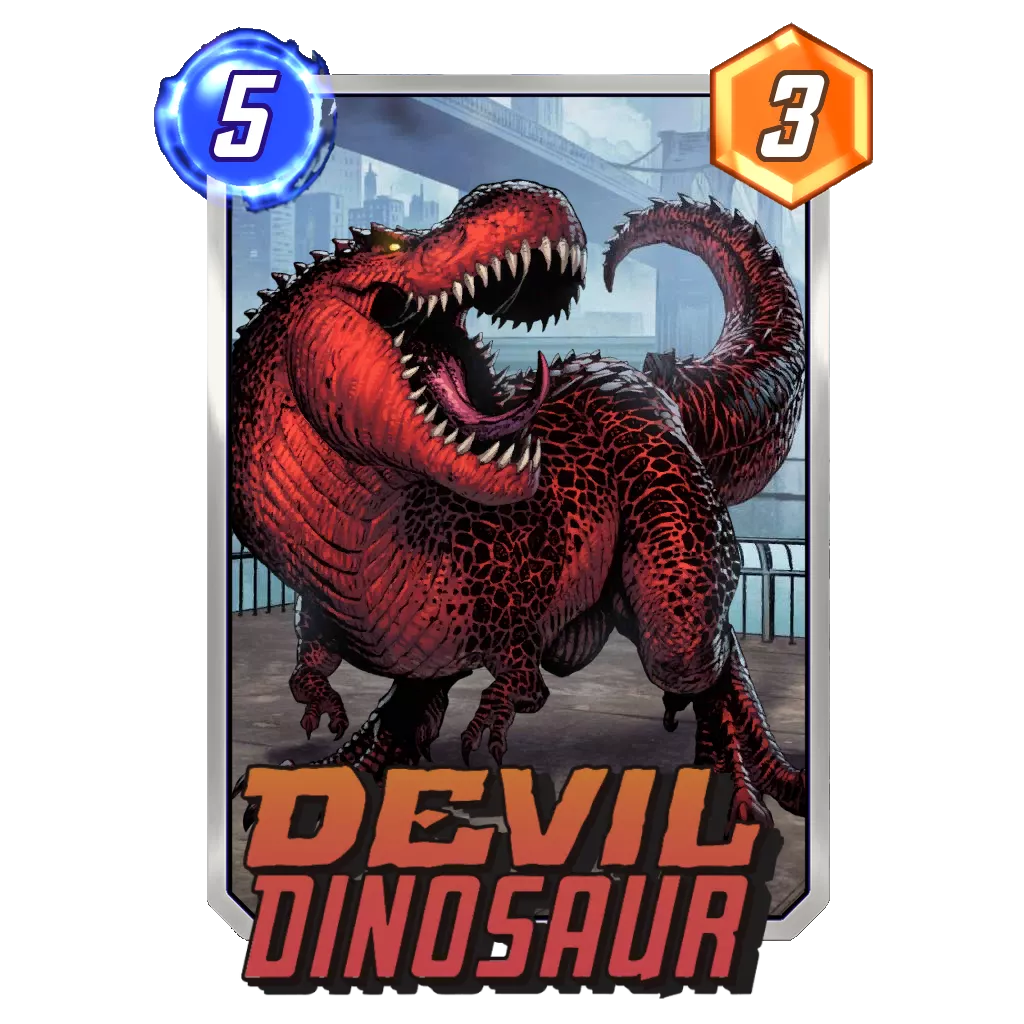








He’s everywhere, isn’t he? Devil Dinosaur, already one of Marvel Snap’s most popular cards, finds yet another perfect home in this deck. Most of the stones replace themselves when played, thereby not compromising the Dino’s power. There’s not much else to explain about this card; he is big, and he is powerful.
Aero










At this point, I think explaining too much about Aero makes me feel like I don’t respect her enough. She is in more decks than almost any other card in the game, and for good reason. Priority on two locations with an Aero in hand = you win the game in many scenarios.
Leech
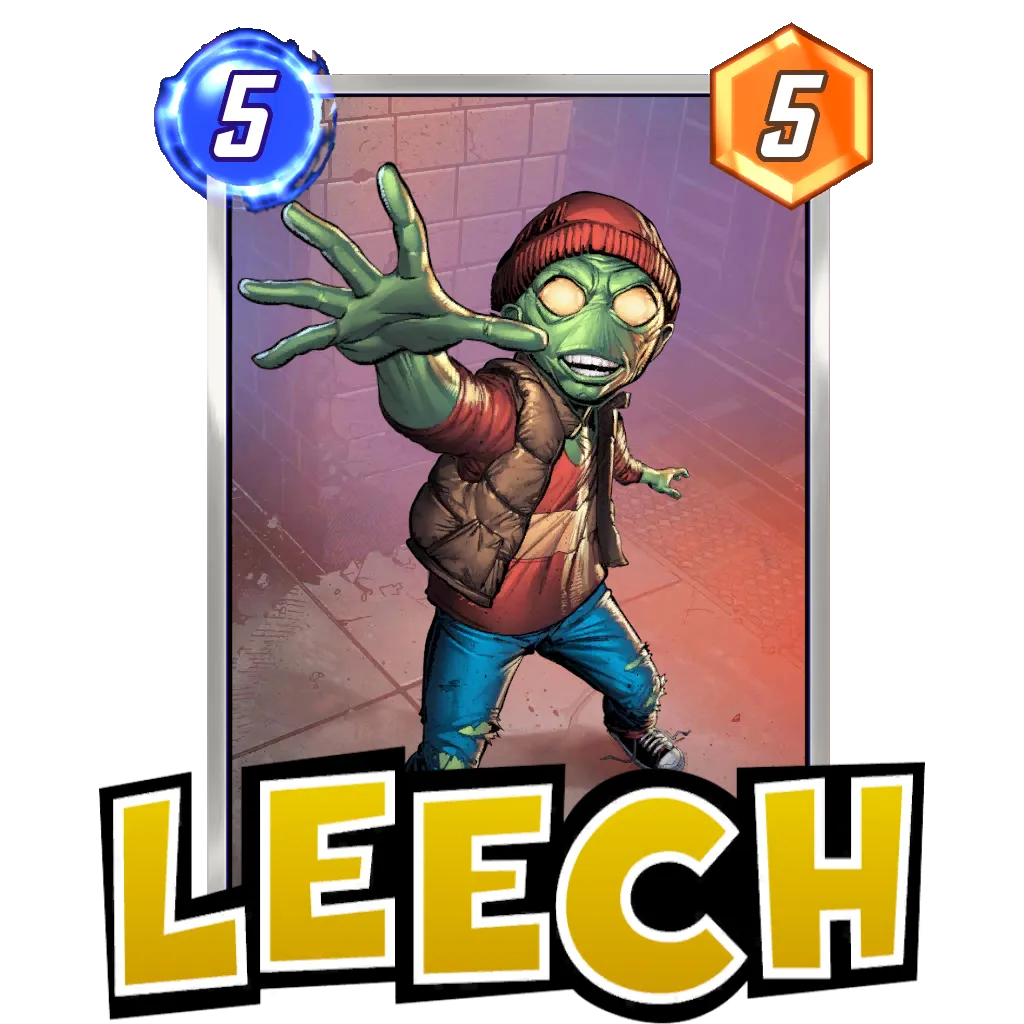






We talked a little about cheating out big threats early in this deck with the Time Stone and Lockjaw, but this little green guy might be the most oppressive card to cheat out. An early Leech decimates most of the potential counter cards that people run to beat this deck (Killmonger, Shang-Chi, etc.). We will go deeper into Leech discussions later in the guide, but this is likely the deck that this card finds its perfect home in.
Shang-Chi
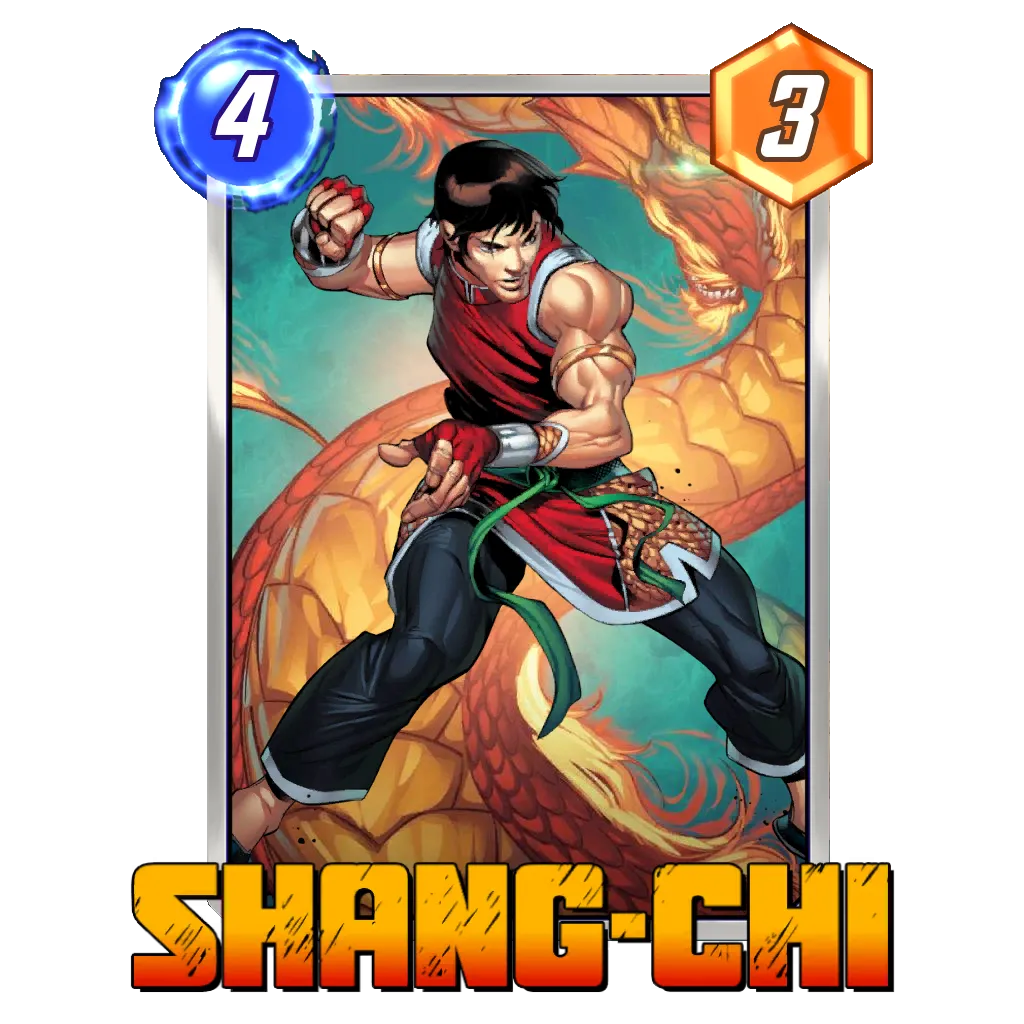











One of the best removal pieces for big threats in the game, Shang-Chi has a simple effect with game winning proportions. Big point to note here: in this deck, leaving yourself the option to play Lockjaw + anything to summon Shang-Chi from your deck and decimate your opponent’s big threats is a common play that I often do (if it’s worth the risk).
Magneto
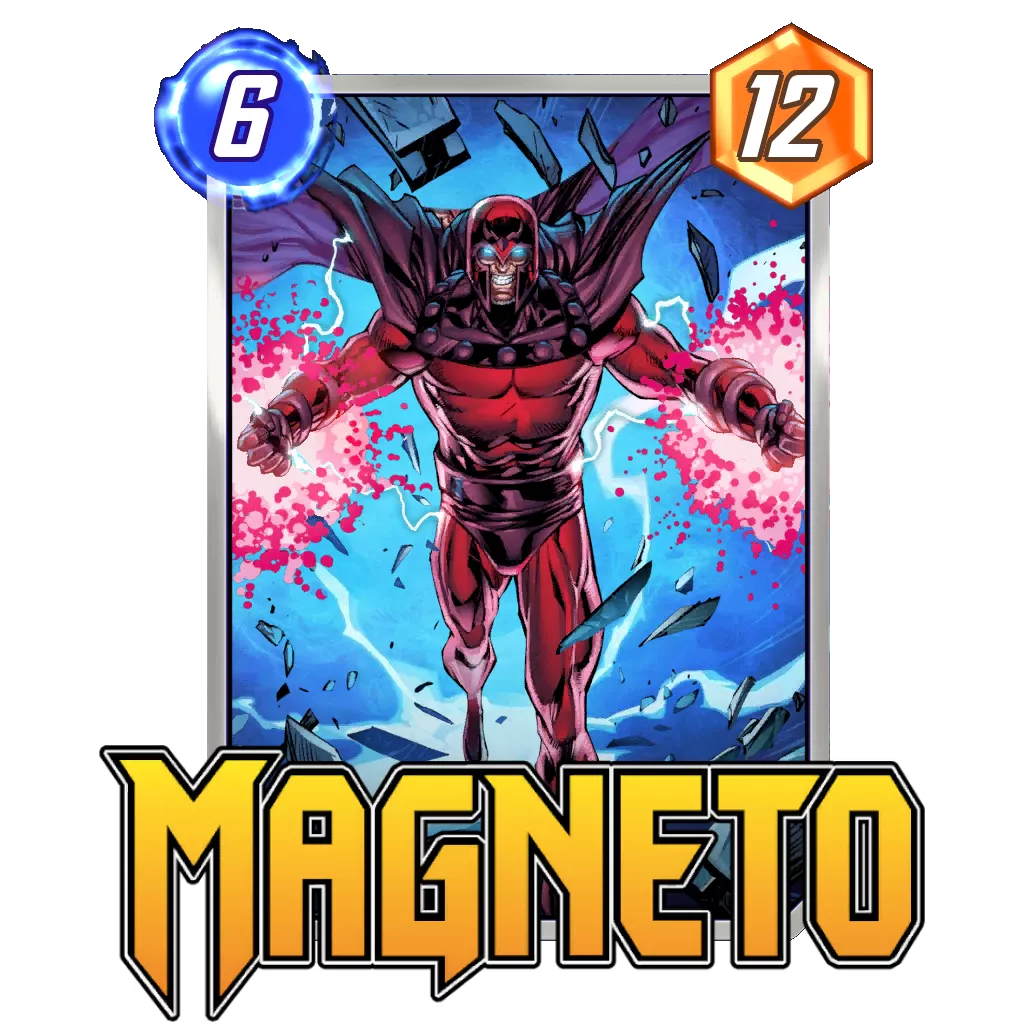












I find this to be one of the more flexible inclusions in the deck. Twelve raw power is a very compelling reason to run him as a high roll off of a Lockjaw; however, there are situations where pulling key 3- and 4-cost cards to a specific location will end up as a surprise win against an unaware opponent.
Another interesting note is that he has a larger base power than an opposing Thanos. Definitely a card you can consider rotating in and out of your deck if you want to try other spicy inclusions.
America Chavez
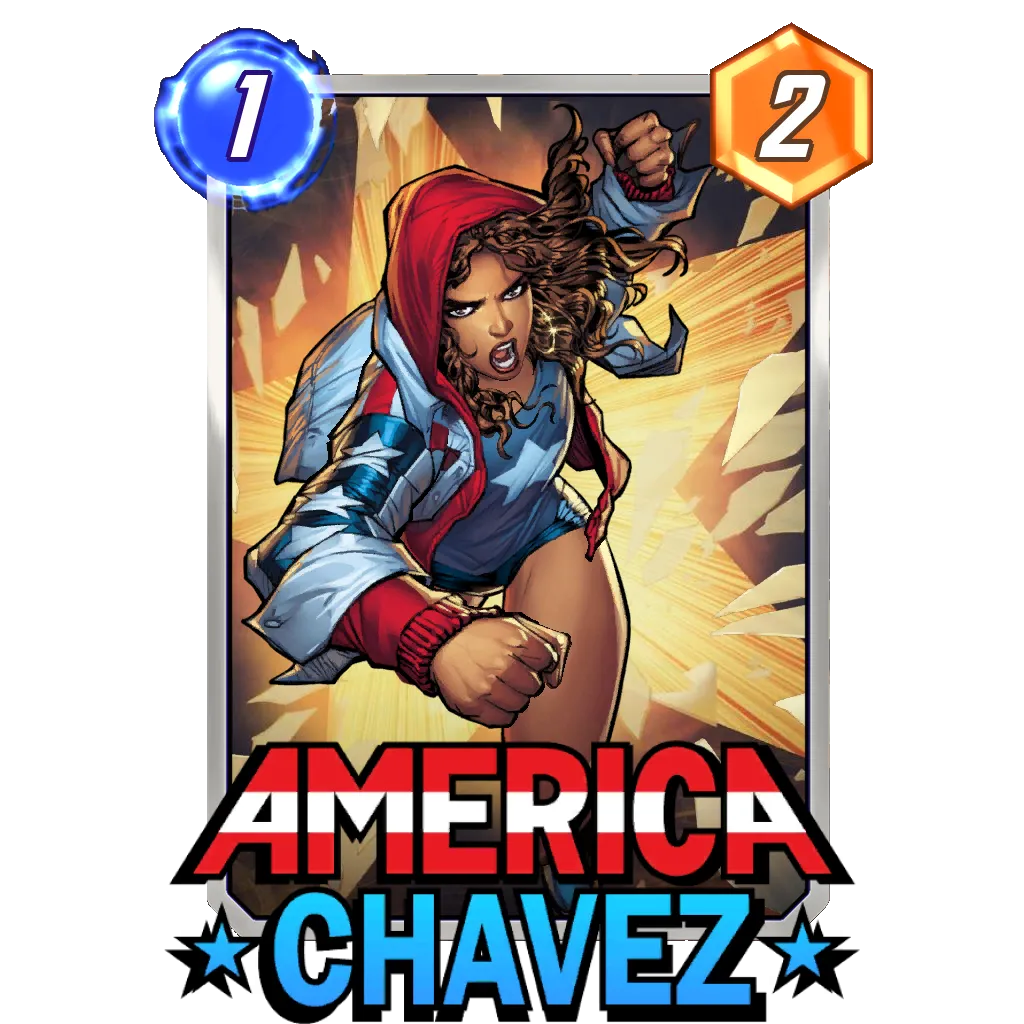









The amount of discussion we’ve had about the relevance of this card in an 18-card deck has gone on for a while. The percentages are not in favor of her inclusion here over a 12-card deck, but this does not take into account how many cards this deck draws with the Stones. The added percentage of allowing you to see your Stones and Lockjaw and Quinjet earlier is already beneficial enough for me to include her in the deck. She is also a high roll off of Lockjaw that you can never draw before turn 6, which is an important consideration. After thousands of games with this deck, my opinion is that you always run this card. Consistency is king.
Gameplay Guide and General Strategies
In this the most important portion of the guide, I will discuss certain scenarios that you may encounter in the time you spend mastering the deck. This portion of the guide answers the most common questions I get asked on stream or on Discord.
Thanos Lockjaw is an extremely flexible deck. Every game feels like a new puzzle you need to solve, and there is almost no situation that is exactly similar to another.
Opening hands with Infinity Stones = playable hands
The most difficult games with this deck come when you don’t draw your Stones. A Stone will replace itself in your hand when played (except for the Power Stone), digging you deeper into your deck to find other key cards like Quinjet and Lockjaw. A very common misconception is that we need to save Stones like the Reality Stone and the Space Stone for game winning pushes.
For what it’s worth, you can’t make the game winning push without actually seeing your game winning cards. If a situation arises where you need to play a Stone as a simple 1-cost to draw a card, go ahead and do it. With your new set of draws, re-evaluate how you intend to win from there.
Planning where cards are placed in advance
The main reason for this is board space constraints. This deck often runs into the issue of running out of space to play everything you want to play. Filling up your locations too early gives your opponent full information that no more power can be added to that location, which allows them to play even more optimally. We don’t want that.
For example, if we have three cards in a location and our only way to contest it is to top deck Devil Dinosaur, consider not expending the energy and waiting for that crucial draw instead. Sunspot helps a lot in these scenarios by keeping you from falling too far behind.
Another common scenario is planning for the big 21 power Thanos play. Six stones take up a lot of space on the board, so making an early call on where you think the mad titan would be best is often game winning.
Trust the dog
This might be most relevant in Battle Mode where retreating may not always be an option. If you’re feeling lucky, remember that using Lockjaw + Stones to fish for cards like Shang-Chi, Aero, something with a lot of power, etc. could be the difference between winning and losing. Your opponent can’t fully plan around it because luck is involved, and if it’s your only way to snatch an 8-cuber then it may be worth it!
To Leech or not to Leech
As much as this point pertains to Leech usage, it also discusses general macro awareness. I mentioned a little about how an early Leech is back breaking and that it might be one of the best things to cheat out early. Remember, the card is still five energy for only three power. Before playing Leech, identify if it will put you severely behind on points or not. Can you win in terms of points if you play it or will you get overrun by a bunch of big things without abilities?
Maybe a huge Devil Dinosaur wins you the game more often. I use Leech here as an example as I’ve encountered too many scenarios where the early Leech looks good, but further examination reveals that I am already way behind on points. Leech is best when it’s sort of free (off of Lockjaw), when you are way ahead on board, or if you feel they have some huge combo coming that it can disrupt (think Wave + She-Hulk + Death).
Another HUGE note for Leech: count, count, and count again. Always take note of how many cards you hit with Leech’s effect. It does not always save you from their lucky top deck, but it is a good habit to inculcate nonetheless.
Understanding Quinjet
It cannot be stressed enough how important it is to be able to play free Stones. A common game losing play would be to use Quinjet as Lockjaw fodder without available Stones (case by case scenario, of course). Trusting in your deck to draw said Stones while having Quinjet and Lockjaw on the board allows for greater tempo swings as these 0-cost Stones can be paired with any of your other threats to spread points across the board.
Energy expenditure sometimes becomes awkward in the late game where you want to cycle Stones with Lockjaw but you need to play a big threat from your hand, and it would be rather difficult to do that without having Quinjet already on board.
A little bit about the Thanos Lockjaw mirror
I’ve been asked this a lot, and in my testing (aside from absurd locations and early Lockjaw high rolls) the player with the better understanding of the mirror usually comes out on top with a significant sample size. The following are some tips to give you an edge in the mirror:
- Know when to retreat. It is unlikely for you to win if your opponent opens with Quinjet + Lockjaw; this scenario will likely snowball out of control if you yourself do not have a similar start.
- Aero is bae. It is easy to clog your opponent’s locations in the mirror as Stones often clutter the board on both sides. A Turn 4 Aero, courtesy of the Time Stone, can lock out a location in the mirror if your opponent is not careful.
- Appreciate Sunspot. I like to pair Sunspot with another big threat on the same location to hedge against Shang-Chi. Forcing your opponent to expend four energy on their final turn to destroy a big threat while a mid-sized Sunspot (five to seven power) remains may be enough to still contest the location.
- Spread your threats. In a similar vein, if you’re given the luxury, spread your big cards across multiple lanes so you do not get completely blown out by Shang-Chi.
- Anti-Leech Hail Mary. If you get hit by an early Leech, there are times where you can play your leeched cards (Stones, Shang-Chi, even some big threats) into Lockjaw to try to high roll another significant threat. Doing so also removes the Leech effect from those cards, which allows you to draw them again to be used for their intended purposes.
- Contest your opponent’s Lockjaw location. It might be daunting to play cards into a location where your opponent has a Lockjaw, but they are usually unable to actually develop any concrete points from hand into that location because Lockjaw outcomes are random. Your average sized threats may be enough to take the lane if they do not get fortunate with their cycles.
Potential tech choices
This deck has a host of toolbox options, and the following are just some inclusions you can try that may suit your playstyle better.
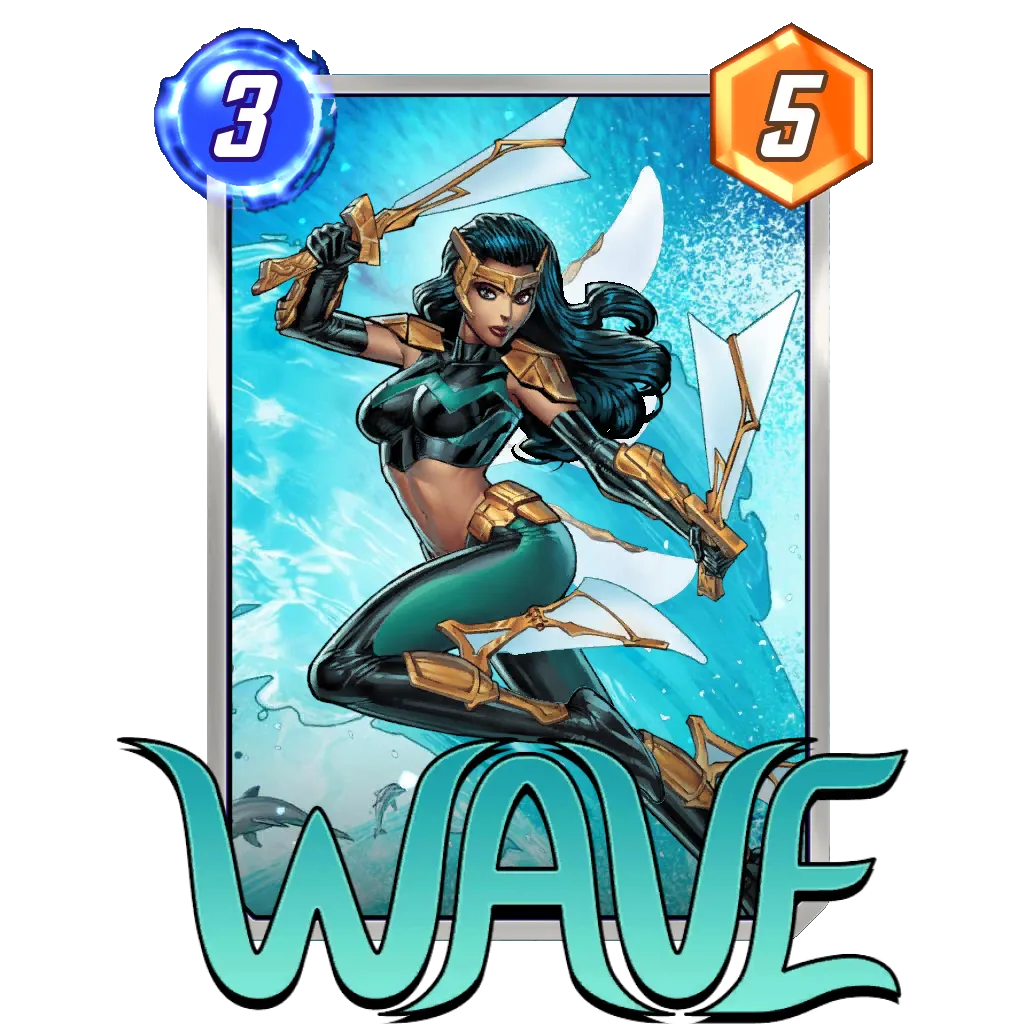







Wave: A personal favorite of mine. Playing the usual Wave on Turn 5 into She-Hulk and another card while your opponent is limited to only playing one card could easily halt many final turn combo strategies. The general idea with Wave (with or without She-Hulk) is to isolate what your opponent can do on their turn to only a few things.
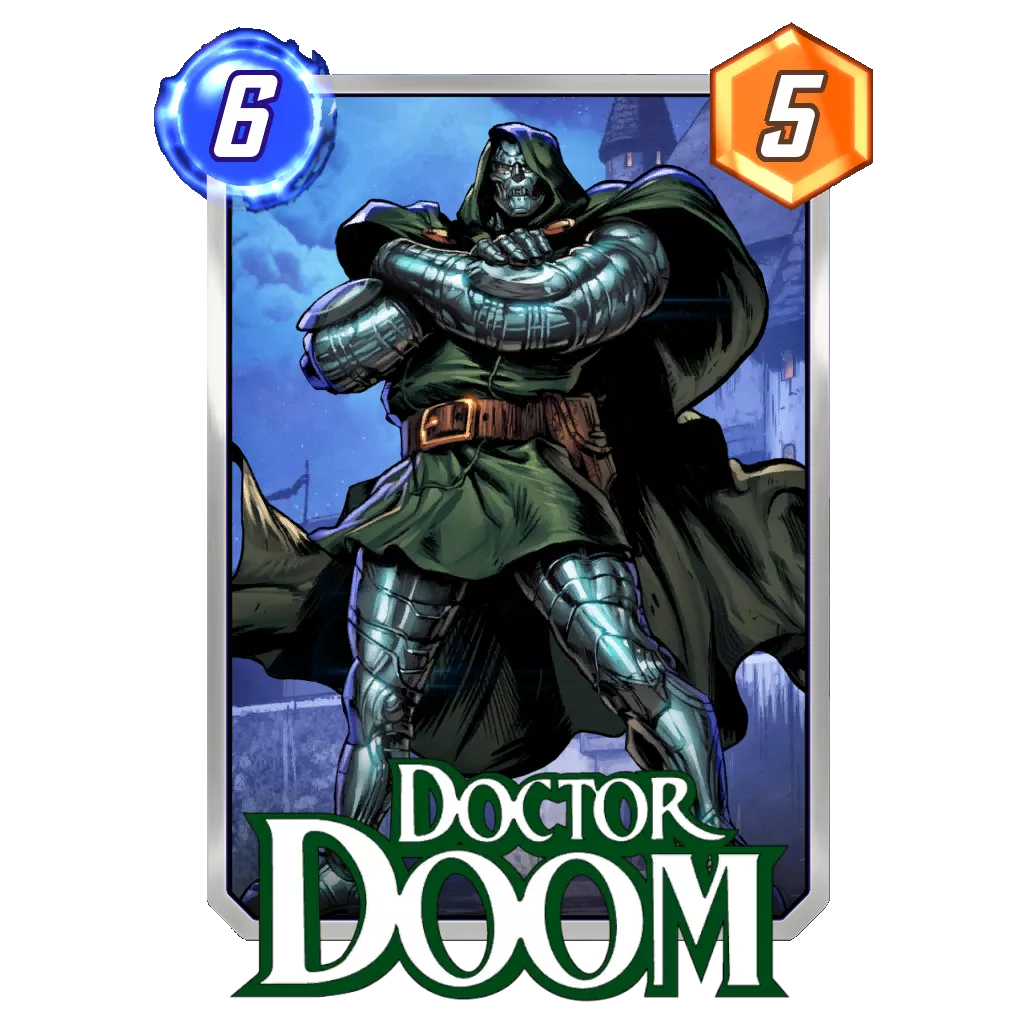










Doctor Doom: Six energy for 15 power spread across each location is nothing to sneeze at. In testing, this card has been one of the easiest ways to come back from getting your Stones wiped out by a Killmonger. The biggest downside is that it does contest with the Stones for your own board space.
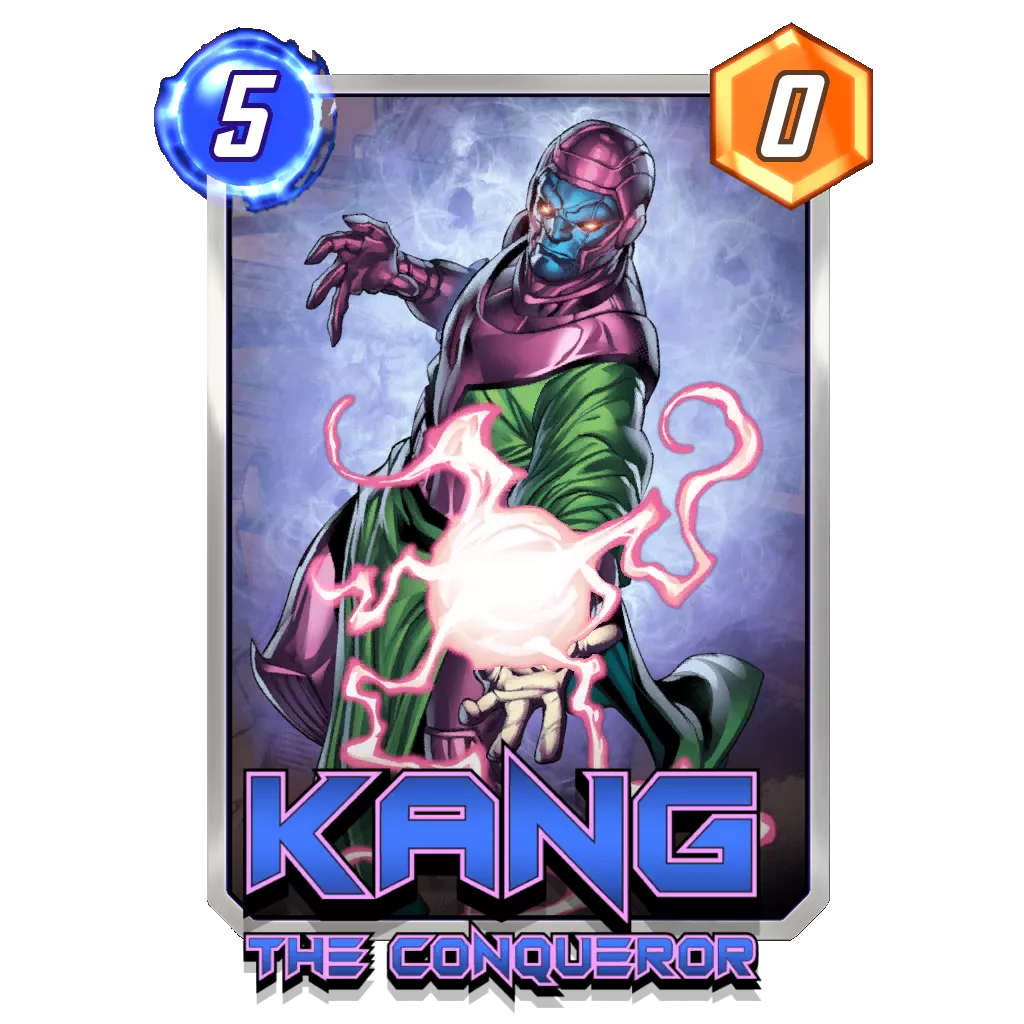








Kang the Conqueror: I am personally a fan of Kang in Battle Mode, but we will not delve too deep into that here. He has some anti-synergy with Devil Dinosaur (if you look into the future with Kang, your Devil Dinosaur on board will permanently have 2 less power as Kang disappears from the game).
The card is still being explored throughout the meta, but in this deck, getting him onto the board off of Lockjaw’s effect thins your deck by a card after he disappears and lets you roll for another outcome while also giving you information on what your opponent intended to play that turn.
Vision: Very low in popularity as of late. I never really feel too good about playing Vision from hand as there are already many other good 5-cost cards in this deck. He is superb to get off of a Lockjaw roll, though, because moving himself away from Lockjaw’s lane allows you to continue cycling.
Closing Words
I hope that I’ve been able to impart some of my knowledge to everyone, and that this guide has been helpful in one way or another. I’ve laid out some of the more common occurrences and paths to improvement in your gameplay here, but I urge you to come to your own conclusions as often as possible and use my analyses as a baseline. Thank you all for giving this a read.
I’ll catch you in game! (where I will maybe take your 8 cubes……. 😊)

⭐ Premium
Enjoy our content? You can Support Marvel Snap Zone and your favorite content creators by subscribing to our Premium community! Get the most of your Marvel Snap experience with the following perks for paid membership:
- No ads: Browse the entire website ad-free, both display and video.
- Exclusive Content: Get instant access to all our Premium articles!
- Meta Reports: Exclusive daily meta reports, such as the Ultimate Card Metrics Report, Top 10 Decks of the Day, Top 30 Cards, and Top Card Pairs tailored for you!
- Team Coaching: Join our free weekly team coaching call sessions on the Discord server. Claim your Premium role and gain access to exclusive channels where you can learn and discuss in real time!
- Premium Dashboard: Get full instant access to the member-only dashboard, the all-in-one page for all your benefits.
- Support: All your contributions get directly reinvested into the website to increase your viewing experience! You get also get a Premium badge and border on your profile.
- Special offer: For a limited time, use coupon code SBYREX4RL1 to get 50% off the Annual plan!
























